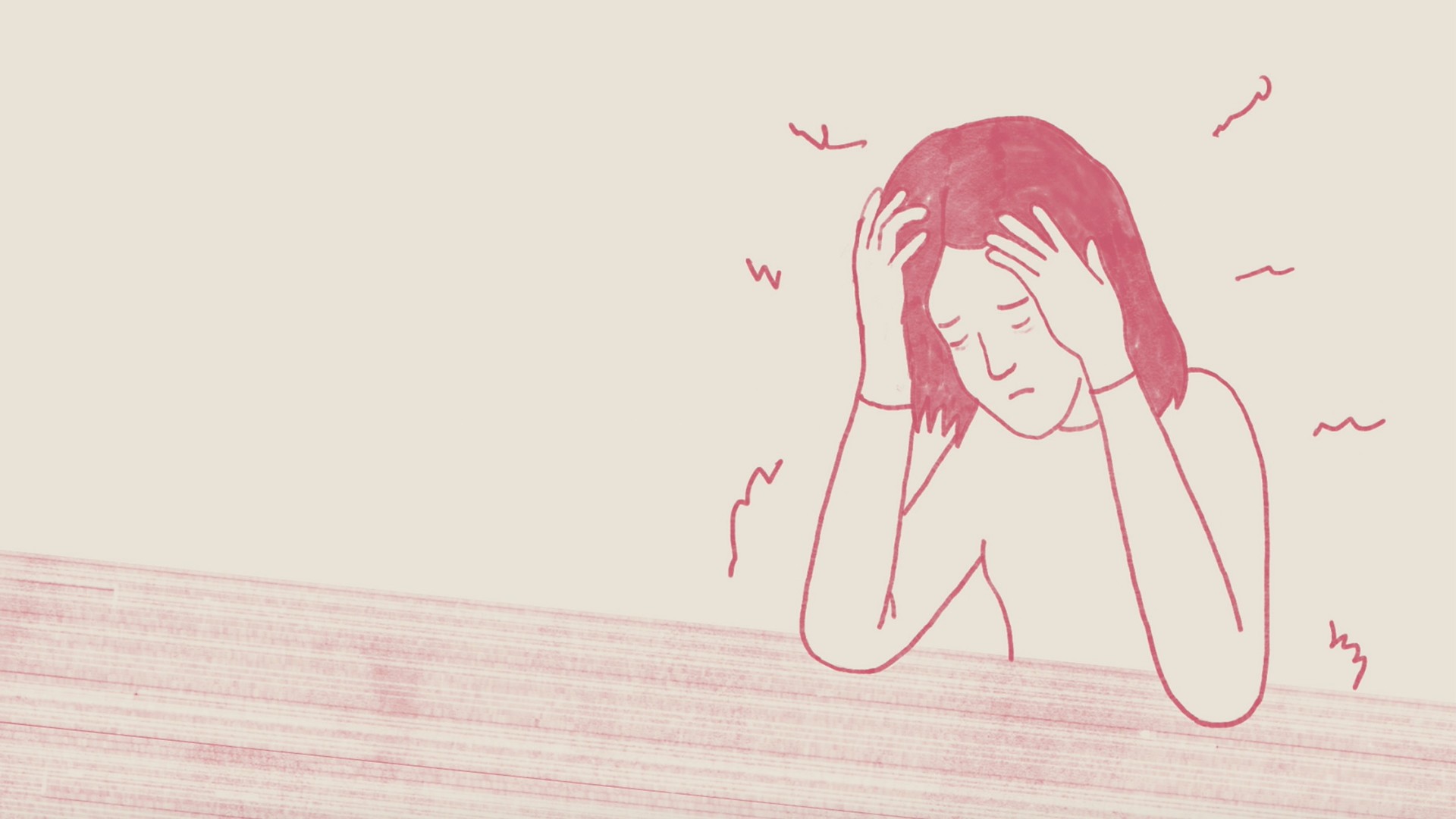On mornings that I wake up feeling anxious, there are several techniques my therapist has suggested I use to calm myself down so I can go about my day like an acceptably functioning adult. There’s a deep breathing regimen, a talk-yourself-down exercise, and a quick round of journaling, for example. And then there are things I’ve picked up on my own, like a self-swaddle.Yes, swaddling—you know, like a baby? There was actually a wellness trend in Japan last year, where adults were wrapped in fabric and rocked by a stranger to alleviate stress. While I haven’t had the pleasure (or terror) of trying that, I have my own version. It’s more subtle because you can’t ride the subway or go to meetings wrapped in a blanky: I do compression clothes. I have a theory that athleisure staples such as leggings and workout tops that wrap me into a spandex burrito mimic a kind of swaddling technique that make me feel calmer, more secure, and kind of hugged, weirdly.Compression clothing (the leggings, most popularly, that people wear while sportsing) are designed to do a few things, and none of them include alleviating anxiety. They’re supposed to reduce muscle vibration, reduce muscle fatigue, and increase circulation, but the science behind most of those claims is thin, which is fine because I’ve found another use for them.It sounds like a stretch that leggings could help with anxiety, and I thought it was just my own quirk that they make me feel better. But once I started looking into it I discovered there might be something to it. There’s something called deep touch pressure stimulation, which is a form of touch pressure applied to the body that provides a feeling of a firm hug, holding, swaddling, or massage. “It works sometimes for kids who have ADHD, or some sort of autism spectrum disorder. The idea behind swaddling or using weighted anxiety blankets is that they’re supposed to make people calmer,” says David Klemanski, psychologist and professor of applied psychology at NYU Langone Health. “Over time, it’s been researched more and it has been shown to be positive on anxiety reduction.”When I ask Klemanski about my compression pants specifically, he says that it’s actually along the same lines as using compression vests for kids who are feeling overstimulated from symptoms of ADHD—“using tight clothing to make them feel swaddled.” He goes on, “athleisure attire can have similar effects. It’s just a new way of thinking about it. It’s giving that structure, it’s giving that warmth, and it’s like a full-body hug.” These pieces of clothing can work similarly to a weighted blanket, he adds, for people who take to those.The for people who take to those part is important: While I’m out here feeling Nobel-worthy for discovering a new tool for managing anxiety, some anxious people will have the complete opposite reaction to tight, confining clothes. “For some people, it makes them feel claustrophobic, which is another kind of anxiety, and therefore not a pleasant feeling and will increase their anxiety,” says Gail Saltz, a psychoanalyst and clinical associate professor of psychiatry at the New York Presbyterian Hospital Weill-Cornell School of Medicine.“It’s hard to predict who’s going to be who there.”
More from Tonic:
Klemanski concurs: “I wouldn’t recommend this universally because for people who do have that panic response, or claustrophobic response, this is going activate their anxiety. I always stress that anxiety is such a subjective experience for everyone.”I get it. The secure, calming embrace I get from compression clothing could easily feel like suffocating oppression to someone with a different “brand” of anxiety. For example, my colleague tried a weighted blanket and did not enjoy it. I, in turn, could throw two of those bad boys on and within minutes, drift into a peaceful slumber embedded with dreams of Michael B. Jordan feeding me wedding cake.Saltz confirms that folks like me can sometimes take this deep touch pressure thing to another level. She describes one client of hers who liked to crawl in between his mattress and the box spring and sleep there when he was having trouble sleeping because of anxiety. “That sounds divine,” I accidentally say out loud. “Do not do that,” she says sternly. “That’s dangerous, especially if you have circulatory problems.”Back to the leggings. While clothing like this doesn’t put actual weight on the body like the blanket does, “it’s analogous in the sense that by creating pressure in various places, it seems to desensitize you to the overfiring of your sympathetic nervous system, which is producing a lot of the symptoms of anxiety,” Saltz tells me. (As a refresher, the parasympathetic system spares the body from overusing energy, while the sympathetic nervous system cranks the ol’ “fight or flight” stress reflex.) “If your body is being hugged and there’s pressure in those places, that’s neurological input or stimulation.”If you are on Anxious Team Tight Clothes like me, you might want to invest in some quasi-swaddling athleisure attire; the pieces listed below are all priced between $35 and $100, because your supplementary comfort tool should not cost more than your meds. I came to the realization that I was responding to certain qualities in the clothing items that various companies sent me (for free). Here’s the gist:Lululemon’s Align and Visakai’s High Rise Hustle and Flow (can’t make this up) leggings have an exceptionally high waist made from a fairly substantial fabric, which makes my torso feel like it’s is wrapped in a tourniquet of softness. “The high-rise feature in many of Lululemon’s pants is meant to keep people feeling covered and secured,” Tom Waller, who runs Lululemon’s research and product development arm, Whitespace, says. That is exactly my jam. “To you it feels safe,” Saltz reminds me. “For other people, it might be like, ‘this is like a girdle and I’m dying. Let me out.’”I thought about Saltz’s fancy science phrasing—“desensitizing the overfiring” of my nerves—when I tried pants with strategic sections of compression. This means that they are textured and tighter in certain places like the calves and quads. 2XU’s Compression pants and New Balance’s Intensity tights were just that—intense. The tightness felt almost massage-like. Putting any type of compression legging on, by the way, takes 25 minutes and sometimes some lube, but it was worth it for me.I have a texture-comfort thing. If I could stroke a cat in my office chair like some kind of anxious movie villain, I would. To that end, clothing that can hug me and feel incredibly soft are a win. Reebok’s Compression sports bra and Ultracor’s Holograph Luster leggings both feel like a wetsuit made of butter (the latter is $185 which gives me anxiety on its own, but still). If that’s something that sounds tantalizing to your anxious behind, then lean in.“Pay attention what makes you feel better,” Klemanski says. “All the recommendations people in life are giving you—they’re all well-intentioned—but you really want to find out what works for you.”Sign up for our newsletter to get the best of Tonic delivered to your inbox.
Advertisement
Advertisement
More from Tonic:

Klemanski concurs: “I wouldn’t recommend this universally because for people who do have that panic response, or claustrophobic response, this is going activate their anxiety. I always stress that anxiety is such a subjective experience for everyone.”I get it. The secure, calming embrace I get from compression clothing could easily feel like suffocating oppression to someone with a different “brand” of anxiety. For example, my colleague tried a weighted blanket and did not enjoy it. I, in turn, could throw two of those bad boys on and within minutes, drift into a peaceful slumber embedded with dreams of Michael B. Jordan feeding me wedding cake.Saltz confirms that folks like me can sometimes take this deep touch pressure thing to another level. She describes one client of hers who liked to crawl in between his mattress and the box spring and sleep there when he was having trouble sleeping because of anxiety. “That sounds divine,” I accidentally say out loud. “Do not do that,” she says sternly. “That’s dangerous, especially if you have circulatory problems.”
Advertisement
